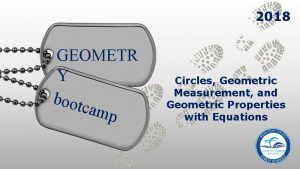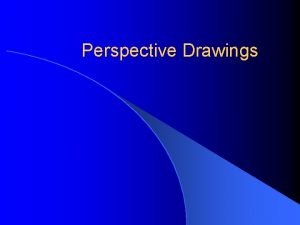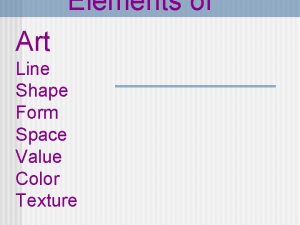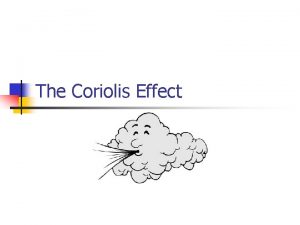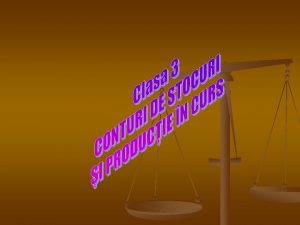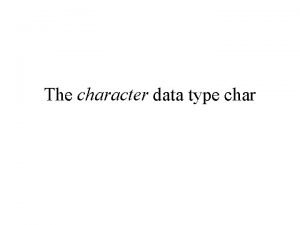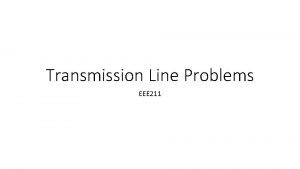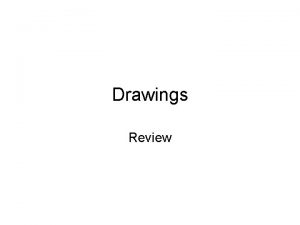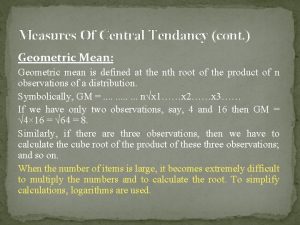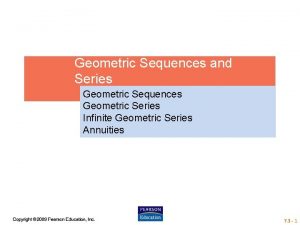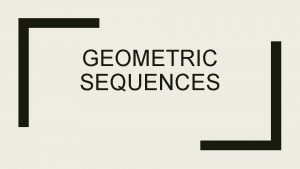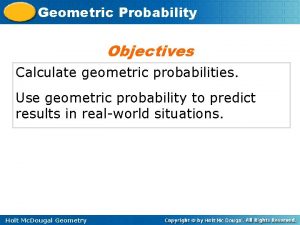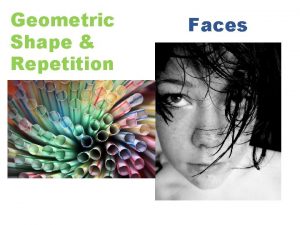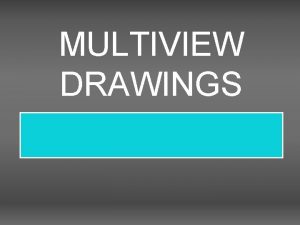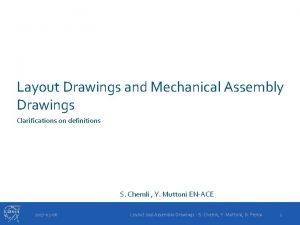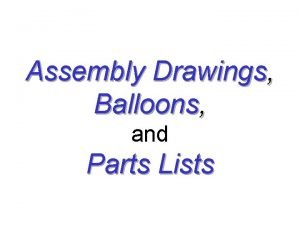Geometric Line Drawings Cont Finishing Up Finishing up




















- Slides: 20

Geometric Line Drawings Con’t Finishing Up!

Finishing up from last week: Instructions: 1. Divide your page into fourths. 2. Divide each fourth in half using a straight diagonal line. 3. Use your felt tip pens to colour in each geometric section. 4. Change the colour each time the felt pen crosses a line.

Gallery Walk and Exit Slip • Put all materials away. • Stand up, tuck your chair in, and hands behind your back. • Check out your classmate’s geometric works. • Back at your desk, fill in the exit slip! • Glue it to the back of your work.

Introducing One-Point Perspective

What is ‘perspective’? • Perspective is the art of making 2 D lines on paper turn into a 3 D form. • It creates the illusion of receding space. • One-point perspective contains only one vanishing point.

What is the history of perspective? • Started in the Renaissance (1400 -1600) • Artists, writers, musicians, architects, scientists, and mathematicians clamored for knowledge and new ways of looking at the world. It was one of the most exciting times in history. • Artists wanted to start painting their surroundings realistically – but they didn’t have the tools to do this. Michelangelo Raphael Titian Jan van Eyck Caravaggio

• • • Flat Floating Same size Stacked in rows Horizon line at top Paradise Giovanni di Paolo 1445.

During the Renaissance: • Artists started to experiment with illusion and deep space on a flat surface. • Figured out that lines appear to converge as they recede into the horizon. • Figured out that closer objects appear larger and clearer than those behind them. • Artists could now mimic the way the world looked around them! • They used a mathematical system of using lines to create realistic-looking depth called linear perspective.

• One of the best examples of onepoint perspective. • Lines on the floor tiles and the pillars converge at a single vanishing point • Horizon line between the heads. • Center figures the most important. Raphael The School of Athens 1509 -1511


Principles of One-Point Perspective • Forms appear as their true shape without any distortion. • Surfaces travel away from our eyes toward a vanishing point. • The vanishing point is located on the horizon line (the eye level line). Vincent van Gogh The Night Cafe 1888

Sketchbook Page 1: What We’re Doing Step A: 1. On your first page, create Square #1 (each side should be two inches long) 2. Draw Square #2. Measure one inch down the right vertical side of Square #1 and draw a horizonal line. This is the top of your second square.

Step B: • Use diagonal lines to connect the two squares: connect the same corners between Square #1 and Square #2.

Below your box, please write: When diagonal lines converge (come together) this shows space receding.

Sketchbook Page 2: Vanishing Point & the Horizon • To draw in perspective: All diagonal lines will vanish to a point on the horizon. • The VP is where the diagonal lines converge on the horizon. • One-point perspective: 1 VP


On your paper: • Step 1: Draw your horizontal line. • Step 2: Put a vanishing point on the horizon in the middle of the paper (small dot)

• Step 3: From the front edge of your paper, draw #1 diagonal line to the VP • Step 4: From the front edge of your paper, draw #2 diagonal line to the VP • Step 5: From the top edge of your paper, draw #3 diagonal line to the VP • Step 6: From the top edge of your paper, draw #4 diagonal line to the VP

• Step 7: Draw a tree in the widest area at the front. Move backwards, but all trees must stay within the two diagonal lines.

In your sketchbook, write down two things you learned today.
 Debriefing report
Debriefing report Cont or cont'd
Cont or cont'd 2018 geometry bootcamp answers
2018 geometry bootcamp answers Internal finish line in removable partial denture
Internal finish line in removable partial denture Indirect retainer classification
Indirect retainer classification The converging lines are horizontal lines
The converging lines are horizontal lines Polygon drawings line color value texture shape space form
Polygon drawings line color value texture shape space form Line shape and form
Line shape and form Principle of surveying
Principle of surveying Intermodal cont.
Intermodal cont. Objective of un
Objective of un Cont’n air
Cont’n air Cont'n air
Cont'n air Plusnet data
Plusnet data Flow of debate
Flow of debate Cont 301
Cont 301 Celtic/cont
Celtic/cont Cont’n air
Cont’n air Literal character
Literal character First bank comisioane persoane juridice
First bank comisioane persoane juridice Html header nav
Html header nav


